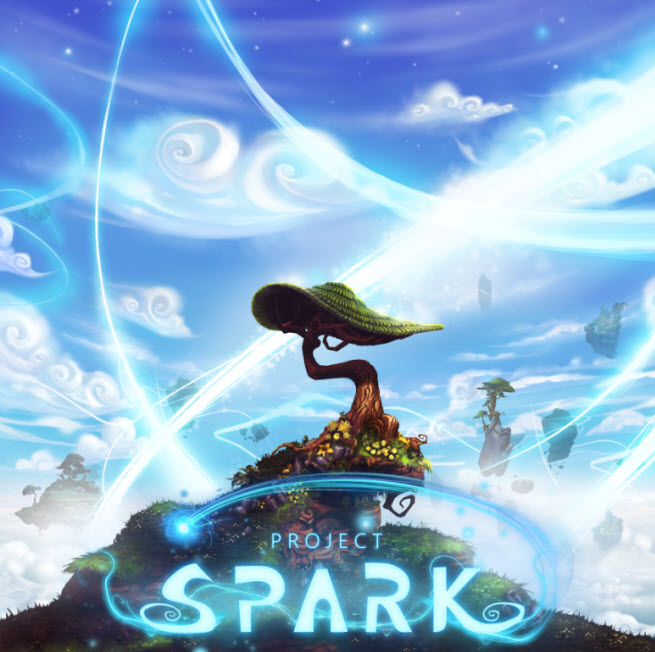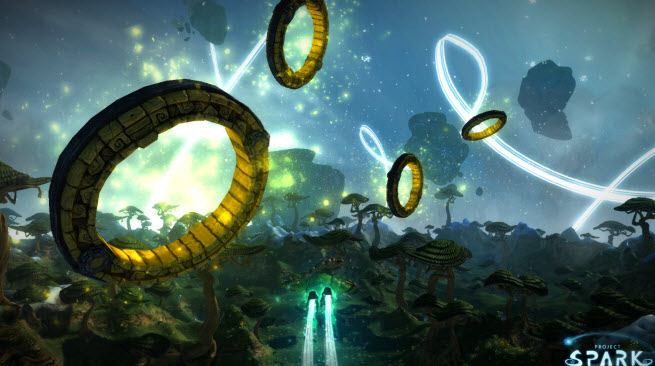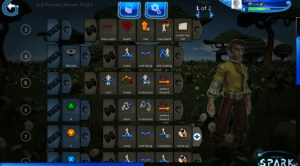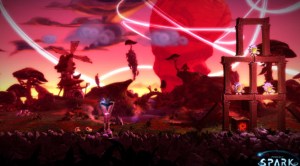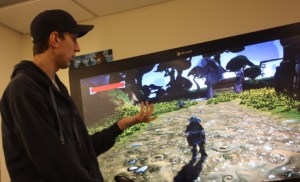GamesBeat: Do you see a bunch of layers here? How creative do you expect your players to be? They don’t want to create blades of grass, but they would love to paint the whole landscape very quickly, so they can finish something fast. But you also don’t want it to be so constrained that they create something and maybe it looks like a thousand other things other people have created with Spark. Is there some deliberate layering built in like that?
Sterchi: Absolutely. If you think about it, it’s very much about peeling the layers of the onion back. At the surface, you can just put down an item. It looks the way we programmed it and drew it to look. Then you can go into it a bit deeper — change the colors or attach objects. We joke about the cabbage. People attach cabbages to people’s heads. They run around and do stuff where their characters have those things on them.
I don’t know if you want to dig into the character creation stuff, but we allow people to change things like skin tone and put these objects on their characters and dive into that.
Rahul Sandil: Someone like me, who’s from more of a business background, I can get into this. I can find something I’ve played before, or that someone has created, and that triggers the inspiration. The questions I can ask are like, “What would this look like with a first-person camera? I can take a side-scrolling game someone has made and, without any programming knowledge, just click on a few buttons and make it into a first-person game. It becomes a whole new game. You can pick any game created in Spark and remix it to make your own thing.
Sterchi: The community has done some fun stuff. One of our inspirations, if you’ve heard of them, there’s a musical group called the Postal Service. It was a sort of indie supergroup that came together via mail and made their own CD.
We have a bunch of tools in our community that allow people to say something like, “Hey, I’m looking for an artist!” or “Hey, I’m looking for programmers.” “Hey, I have this idea, and I need someone to do this part of the game.” In our forums, we have a help-wanted section — a collaboration corner we call it — and people come together like that. People will start to do something, and they’ll get inspired and challenge themselves to take the next step.
If we want to dive into the gamification element of it, one of the things we built into the game is, we give people a sense of progression. The more they do, the more downloads they get, they increase their Spark level. One of the things we’ve included is what we call challenges. We allow people to do these if they want to. We don’t force their hand in any direction. But if you go into the challenges, we have a bunch of things you can do every day.
Go into the goals. You can see we have inspirations in here. We have things like, “Glue some objects together to make something.” We have here, “Spawner” — create this tile to spawn things in your world. If you scroll all the way over to the end, we have a cool multi-step goal for people. “Village Defense.” The first thing you do is you add one of our champions to the world. Then we ask you to add a couple of buildings. Then we ask you to add a couple of enemies. Then we ask you to drop in a couple of turrets. By doing this five-step milestone, you built your own little tower defense game.
GamesBeat: Are there some pretty geeky programming commands that you can ultimately get to?
Sterchi: Absolutely. As you level up, we have trigonometry ones. We have variables and Boolean challenges and stuff like that. We layer those in as you level up. I don’t want to say we give you harder challenges, but definitely deeper ones.
What Rahul said, we’re seeing real evidence of that. It’s encouraging. The community is helping each other. They’re streaming tutorial sessions, or streaming a game and putting it up to let someone else take it and run with it.
GamesBeat: Do they have some commerce options? If they create something and they want to sell it to other players, or if they want to trade things?
Sterchi: Right now, all of this stuff is — we don’t give them actual money or anything like that. But we do have a system where, as we talked about, you can add new elements to the game. It’s free to play. That goes to how we want everyone to be able to create. We wanted to lower that barrier to nothing. So you can go ahead and create with this core set — unlimited, all the stuff.
But what you can do is, as you play and progress you earn credits. You can use those credits to purchase or unlock some of those other content packs we talk about, like the castle. You can play, build up credits, and get the castle for your world. What we do is, in the challenges, we reward people for downloads and uploads and helping each other on the forums. The people that are great creators are making lots of credits, and they’re able to buy more stuff and make cooler things. So we encourage that behavior right now, as opposed to creating a transaction model.
GamesBeat: Is there something that looks like the part people are latching on the most? Is there an activity in the beta that happens the most often?
Sterchi: We have some data. We’re seeing more than 70 percent usage in creating. We’re seeing what we were hoping for – not that five percent you might expect to see creating user-generated content. 70 percent of the time spent in the game is creative. It’s resonating with people.
People ask me a lot about what I’m most excited for. I’m most excited about people creating the unexpected. The barrier to making a new mechanic, making something that’s never been seen before and never been played before, has never been lower. Project Spark facilitates that like nothing else. That’s we’re seeing in the community. We’re seeing game mechanics we’d never thought of. That’s what we’re excited about.
Rebh: What we’re also seeing is that there are certainly the people who come in and say, “I want to make this type of game.” But we also see people who just like to go in there and be creative, not necessarily with a specific objective in mind. They’ll start with the world wizard and build mountains. Then they start dropping in birds. Then they change the brains of the birds to be goblins, so now the birds are attacking them. Before they know it, they start dropping in allies and creating a giant cave. They didn’t have any intent. They’re just having fun using the editor and being creative.
Sterchi: If you think of a linear game, something like Mario, you run, you jump, you bounce off an enemy. Then they give you a harder spot to jump. Then they give you more enemies. That happens naturally throughout, as you’re playing and you’re exploring. You start to say, “Oh, I’ll make a character that jumps.” Then you say, “I want him to double jump.” Then, “I want him to jump higher.” Then, “I want an enemy for him to jump on.” We’re seeing exactly what Brad is saying. They’re naturally progressing.
We’ve seen tons of comments on Twitter already, people saying, “I turned this on and five hours later I’m almost late for work. I got completely immersed in it.” A story just recently came out from someone who reconstructed Fable. People were commenting on the article, and he actually saw it. They were asking him questions, and he was saying, “This is the first level I made. It took me about 20 hours. I did it all with the stuff I started with.” You can see that the people creating have this real connection and this personal story. They’re getting there different ways, on their own terms and at their own pace, but they’re getting there.
Sandil: We’re also seeing a lot of diversity in the demographics. It’s a wide age range, and all ages are represented fully. Grownups and kids and teenagers, men and women.
